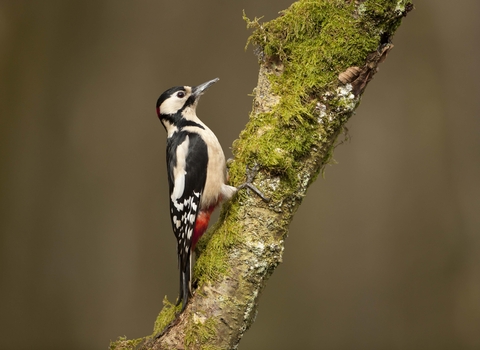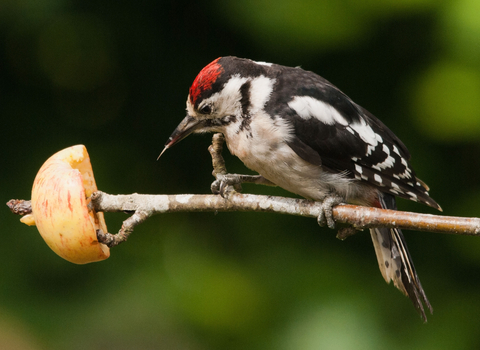
©Mark Hamblin/2020VISION

©Mark Hamblin/2020VISION
©Gillian Day
Great spotted woodpecker
Scientific name
Dendrocopos majorWhen to see
January to DecemberSpecies information
Statistics
Length: 21-23cmWingspan: 36cm
Weight: 85g
Average lifespan: 2 years
Habitats
About
The great spotted woodpecker is a medium-sized woodpecker. It nests in holes that it excavates in trees in broadleaved woodlands, large parks and gardens. It has a distinctive, bouncing flight, but is mostly likely to be heard, rather than seen, as it 'drums' away at a tree trunk during its breeding displays. Great spotted woodpeckers eat insects and larvae, probing tree trunks with their extremely sticky tongues to extract them from their nests. In autumn and winter, they will switch to eating berries and nuts, and will visit peanut feeders in gardens.How to identify
The great spotted woodpecker is black and white, with white shoulder patches and red underneath the tail. Males have a red patch at the back of the head. Only likely to be confused with the lesser spotted woodpecker, which is much smaller and rarer.Distribution
Widespread, although absent from northern Scotland and most of Ireland.In our area
Numbers of Great spotted woodpecker are increasing across the UK and are commonly seen in people's gardens. They can also be seen in woodlands, especially with mature broad-leaved trees, although mature conifers will support them.
You can attract woodpeckers to your garden by putting out feeders containing peanuts, sunflower seeds and fat, In late spring, adult woodpeckers often bring their offspring to feeders. Leave dead trees as they have a good supply of grubs and other bugs - woodpecker's favourite food!
Did you know?
In the last few years, the great spotted woodpecker has started to nest in Ireland for the first time.Watch
Great spotted woodpecker (https://vimeo.com/431481123)
Great spotted woodpecker by Tom Hibbert
Numbers of Great spotted woodpecker are increasing across the UK and are commonly seen in people's gardens. They can also be seen in woodlands, especially with mature broad-leaved trees, although mature conifers will support them.
You can attract woodpeckers to your garden by putting out feeders containing peanuts, sunflower seeds and fat, In late spring, adult woodpeckers often bring their offspring to feeders. Leave dead trees as they have a good supply of grubs and other bugs - woodpecker's favourite food!

